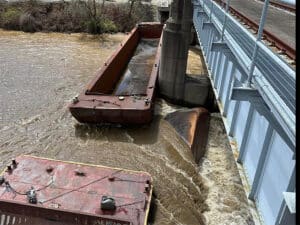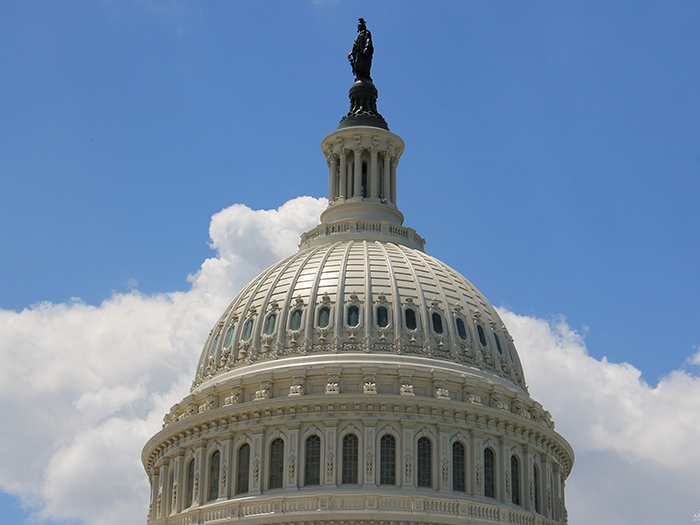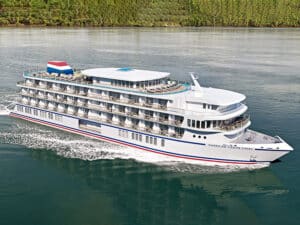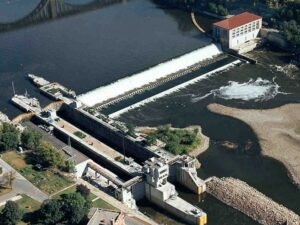
Senators seek to increase USCG Great Lakes icebreaking
Written by Marine Log Staff
Image: Architect of the Capitol
U.S. Senators Tammy Baldwin (D-Wis.), Todd Young (R-Ind.) and Gary Peters (D-Mich.) have introduced the Great Lakes Winter Commerce Act. The bipartisan legislation aims to codify the U.S. Coast Guard’s icebreaking mission on the Great Lakes and increase the icebreaking capacity of the Great Lakes fleet.
“Inadequate icebreaking capacity in the Great Lakes is costing us thousands of American jobs and millions in business revenue,” said Baldwin. “We must boost our icebreaking capacity in the Great Lakes to keep our maritime commerce moving.”
“In recent years, commerce on the Great Lakes has suffered due to a lack of icebreaking during cold weather months,” said Young. “Roughly 28% of our nation’s annual economic output comes from the Great Lakes region, and our legislation will enable us to expand capacity to ship goods, create jobs, and strengthen the economy in Indiana and other Great Lake states.”
“Icebreaking in the Great Lakes is critical not just for Michigan’s economy and small business—but for our entire country,” said Peters. “As we gear up for another winter, the importance of icebreaking is more vital than ever given the economic crisis caused by the Coronavirus pandemic.”
Icebreaking capacity in the Great Lakes supports more than 90 million tons of cargo annually. A study commissioned by the Lake Carriers’ Association found that during the 2018-2019 ice-season, businesses that depend upon the Great Lakes maritime industry lost over $1 billion in revenues because of delays caused by inadequate icebreaking. These economic losses resulted in the loss of over 5,000 jobs throughout the Great Lakes Region.
Specifically, the legislation:
- Codifies into law the USCG’s icebreaking mission in the Great Lakes. Requires the USCG to break ice in the Great Lakes in accordance with the reasonable demands of commerce set forth in the bill. The standards derive from a 1997 Coast Guard study outlining icebreaking requirements on the Great Lakes. They are written to allow the USCG to size its icebreaker fleet to be capable of handling the vast majority of ice seasons while limiting excess capacity. The bill includes a one-time report on the operating costs associated with this new performance standard.
- Requires USCG to report to Congress on the icebreaking season. Requires an annual report of USCG activities during the previous winter’s icebreaking activities.
- Requires USCG to coordinate with industry for icebreaking operations.
- Requires the USCG to prioritize domestic icebreaking mission before breaking ice for Canadian harbors or bays, but allows for exceptions for missions related to safety of life.
- Defines “reasonable demands of commerce.” “The safe movement of commercial vessels transiting ice-covered waterways in the Great Lakes at a speed consistent with the design capability of Coast Guard icebreakers operating in the Great Lakes.”
“This historic bill will codify into law a long time Coast Guard mission that protects national and economic security,” said Jim Weakley, president of the Lake Carriers’ Association. “It provides Congressional direction and performance metrics. Currently, the Coast Guard interprets the ‘reasonable demands of commerce’ as meaning that an ice covered waterway is open until a second vessel is stuck in the ice for more than twenty-four hours as a result of another vessel’s inability to move. They only report to Congress ice restrictions in four connecting channels for the entire Great Lakes.”
More information about the legislation is available HERE.
The full bill text is available HERE.




